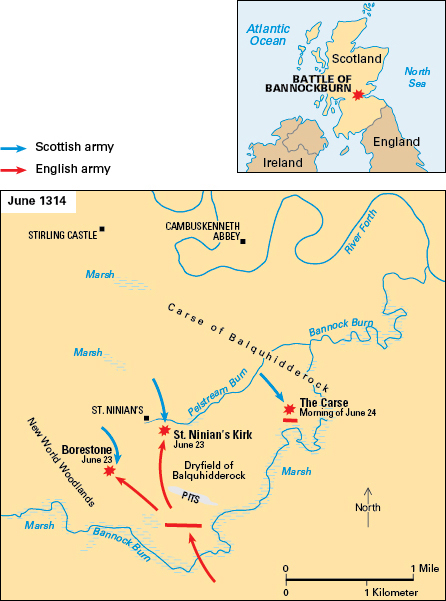Bruce, Robert (1274-1329), was a Scottish king who spent most of his reign trying to free his kingdom from English rule. Ultimately, he succeeded against both England and political opponents within Scotland.

In a famous lawsuit of 1292, King Edward I of England awarded the throne of Scotland to John Balliol over the claims of several other men. One of these men was Robert’s grandfather. Afterward, Edward continued to treat Scotland as a feudal possession. In 1296, the Scottish people revolted, and Edward brought his forces against them. Despite having lost the lawsuit, the Bruce family sought throughout the war with England to protect the cause of Scottish independence.
In 1306, Robert killed one of his chief rivals for the royal title, John Comyn, called the “Red Comyn.” Robert took the throne of Scotland as King Robert I, but soon thereafter the English defeated him in battle. He disbanded his army, went into hiding, and began to plan new tactics against the English enemy.
The next spring, Robert landed in Carrick and defeated the English. By 1309, he had gained control of most of Scotland. He then began raiding and looting England. The English invaded Scotland again in 1314, but Robert’s forces defeated them in the famous Battle of Bannockburn. In 1328, England’s King Edward III recognized Scotland’s independence and Robert as its king.
A famous story by the Scottish writer Sir Walter Scott reports that Robert learned persistence by watching a spider try to anchor its thread. The spider failed six times but succeeded on the seventh try. Most historians doubt that the story is true.
